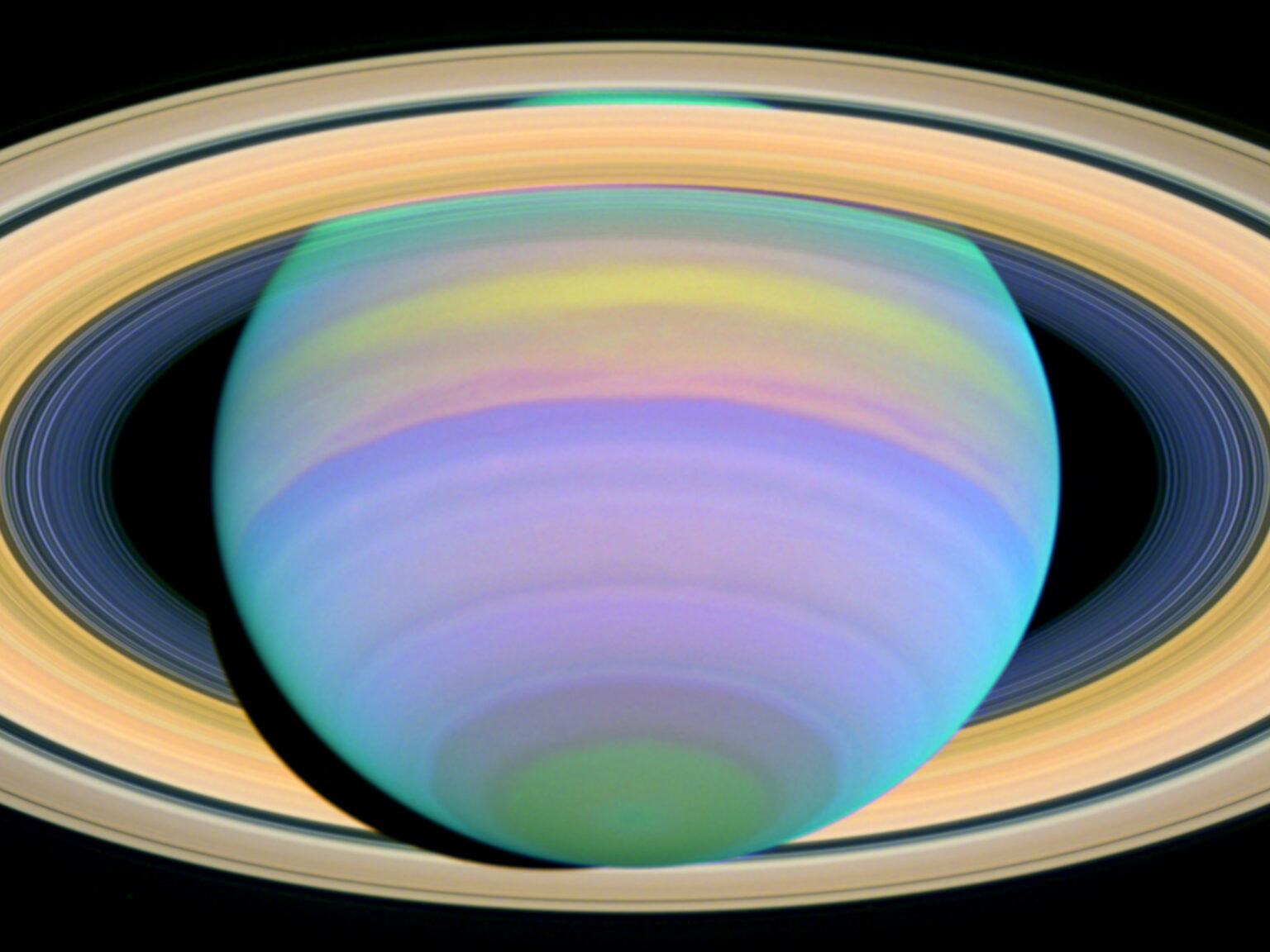Researchers have solved the mystery of why Saturn’s atmosphere emits an excess of light in ultraviolet. It is heated by particles falling from the inside of its rings.

Saturn Mystery
A researcher from the Institute of Astrophysics in Paris, Lotfi Ben-Jaffel, recently published a paper in which he was able to explain one of the mysteries of Saturn, which scientists had not paid attention to for many years. The fact is that the upper layers of the atmosphere of this gas giant emit significantly more ultraviolet than it should have been, based on the current models of the planet.
In general, the emission of energy by gas giants is a common thing. This is due to their compression under their own weight, warming up the gas. But the excess of ultraviolet light occurs by some other mechanism. And Ben-Jaffel has established that the cause of this is the rings of Saturn.
Particles from the inner part of the rings are often slowed down and begin to fall into its atmosphere. In the process, they are inhibited by the friction of the gas. The composition of the atmosphere changes somewhat, and it warms up. And it is this additional heating that is responsible for the excess radiation.
How was the mystery solved?
Interestingly, scientists have had most of the data for a long time to make such a conclusion. In particular, the fact that Saturn’s rings are unstable and fall very slowly into its atmosphere has been known for many years. The Cassini spacecraft confirmed this back in 2017.
The phenomenon of excessive ultraviolet radiation was noticed by Voyager spacecraft in the 1980s. But then it was written off as noise. And only the research results of other missions have proved that it exists.
But now scientists have thought to compare all these facts and figure out how they are related to each other. Spectroscopic studies of the Hubble Space Telescope played a key role. With their help, it is established how the atmosphere of the planet changes under the influence of particles falling on its rings, and this mystery of Saturn has been solved.
According to phys.org
Follow us on Twitter to get the most interesting space news in time
https://twitter.com/ust_magazine

